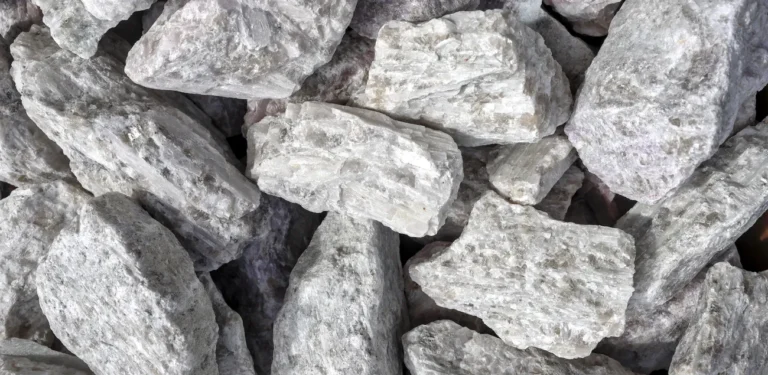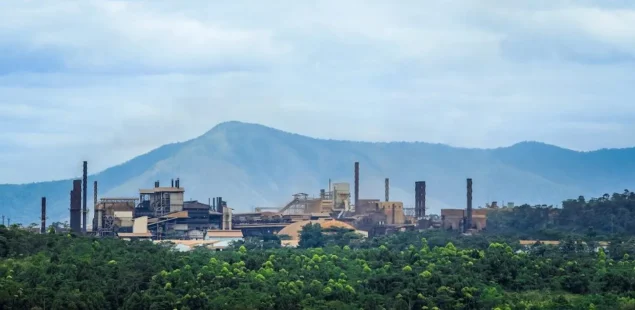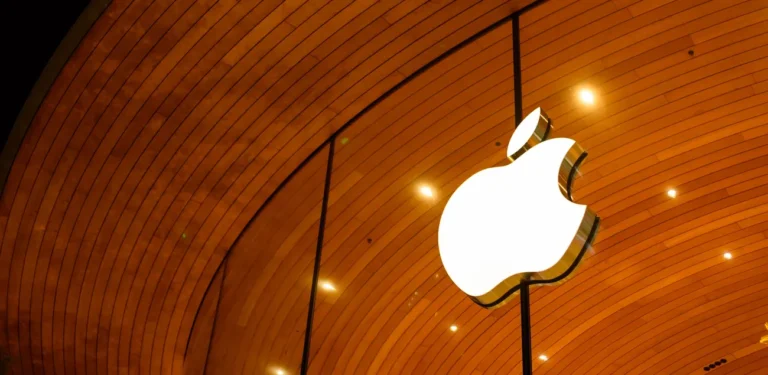
The United Kingdom’s lithium carbonate market is positioned for gradual recovery following two consecutive years of declining consumption, with industry forecasts projecting growth to 1,300 tonnes and $16 million by 2035. This modest expansion occurs within a broader global context of supply chain restructuring and technological innovation, highlighted by Rio Tinto’s $2.5 billion investment in Direct Lithium Extraction technology at its Rincon project in Argentina, as the mining giant seeks to establish itself among the world’s leading lithium suppliers.
UK Market Dynamics Reflect Global Volatility
The UK lithium carbonate market experienced significant turbulence through 2024, with consumption declining 14.6% to 1,100 tonnes while market value plummeted to $13 million from a 2022 peak of $26 million. This downturn reflects broader global price corrections that saw lithium carbonate prices fall from peaks exceeding $80,000 per tonne in late 2022 to below $10,000 per tonne by early 2025, creating challenging conditions for both producers and consumers across the supply chain.
Despite recent volatility, market fundamentals support gradual recovery with projected compound annual growth rates of 1.5% in volume and 2.1% in value through 2035. The UK’s position as a net importer creates dependence on global supply chains while providing access to diverse production sources.
The consumption decline occurred despite growing electric vehicle adoption and energy storage deployment in the UK, where EV sales reached 382,000 units in 2024 representing 19.6% market share. Industry analysts expect stabilization as global supply-demand fundamentals improve and electric vehicle penetration accelerates toward the government’s 2030 target of ending new petrol and diesel car sales.
European Market Stabilization Signals Recovery
The European lithium carbonate market demonstrated signs of stabilization in 2024, with consumption reaching approximately 18,000 tonnes, representing a 13% increase from the previous year despite price corrections that reduced market value to $238 million. Volume growth indicates underlying demand strength across the continent as European automakers accelerate electric vehicle production to meet tightened CO2 emission regulations implemented in 2025.
European lithium carbonate demand is projected to reach 20,000 tonnes valued at $284 million by 2035, representing annual growth rates of 1% in volume and 2% in value. This expansion reflects the continent’s commitment to achieving climate neutrality by 2050, supported by the European Green Deal’s €1 trillion investment framework and the REPowerEU plan targeting 42.5% renewable energy by 2030.
The European market benefits from diversified supply sources including Chile, Argentina, and Australia, though the region faces challenges from Chinese processing dominance that controls approximately 85% of global lithium refining capacity. European initiatives including the Critical Raw Materials Act and the European Battery Alliance aim to develop domestic processing capabilities and reduce supply chain vulnerabilities.
Chinese Market Dominance Shapes Global Dynamics
China maintains its position as the world’s largest lithium carbonate market, driven by the world’s largest electric vehicle market and expanding energy storage deployment. The market is projected to reach 375,000 tonnes valued at $4.6 billion by 2035, representing growth rates of 1.8% in volume and 2.6% in value.
Chinese production reached 670,000-701,000 tonnes in 2024, marking 35-45% year-over-year growth driven by expanded lepidolite processing in Jiangxi province and increased brine production capacity. The country’s integrated approach spanning mining, processing, and battery manufacturing provides competitive advantages and supply chain control that influence global market dynamics.
The country’s dominance in battery cell production, accounting for 77% of global manufacturing capacity, will continue supporting robust lithium carbonate consumption despite periodic market volatility.
Rio Tinto’s Direct Lithium Extraction Strategy
Rio Tinto’s $2.5 billion investment in expanding its Rincon lithium project in Argentina represents a pivotal development in lithium extraction technology and supply chain diversification. The project utilizes Direct Lithium Extraction technology that achieves up to 90% recovery rates compared to 30-50% for conventional evaporation methods, while reducing processing time from 12-18 months to days or hours.
The Rincon expansion will increase annual production capacity from 3,000 tonnes to 60,000 tonnes of battery-grade lithium carbonate, with construction beginning in mid-2025 and initial production targeted for 2028. The project benefits from Argentina’s RIGI incentive mechanism providing tax and customs benefits for investments exceeding $200 million, alongside improved economic stability following recent policy reforms.
Argentina’s position within the lithium triangle, containing approximately 60% of global lithium resources alongside Chile and Bolivia, provides strategic advantages for supply security. The country produced 9,600 tonnes of lithium in 2023 according to the US Geological Survey, with 3.6 million tonnes of proven reserves supporting long-term development potential.
Technology Innovation Drives Industry Transformation
Direct Lithium Extraction technology represents a fundamental shift in lithium processing methods, offering environmental advantages through 95% reduction in water consumption and 99% reduction in land use compared to traditional evaporation ponds. The technology employs selective adsorption membranes, ion exchange resins, or solvent extraction to capture lithium ions while leaving other minerals behind, enabling more efficient resource utilization.
The advancement addresses growing environmental concerns surrounding lithium extraction, particularly in water-stressed regions where conventional evaporation methods consume 500,000 gallons of water per tonne of lithium produced. DLE technology’s reduced environmental footprint aligns with increasing regulatory requirements and corporate sustainability commitments across the battery supply chain.
Industry adoption of DLE technology remains in early stages, with fewer than 10 commercial-scale operations worldwide, though over 50 companies are developing various DLE approaches. Successful implementation at Rincon could accelerate broader industry adoption and reshape global lithium supply chains by enabling development of previously uneconomic brine resources.
Global Supply Chain Restructuring
The lithium industry faces fundamental restructuring as supply chains adapt to changing geopolitical dynamics, technological innovations, and evolving demand patterns. Global lithium demand is projected to reach 3.2 million tonnes by 2034, representing more than four-fold growth from 2024 levels, driven primarily by electric vehicle adoption and energy storage deployment.
Supply growth has struggled to match demand projections, with industry analysts forecasting potential deficits beginning in 2026 as current oversupply conditions normalize. Mine closures and production curtailments in response to low prices have reduced available capacity by approximately 200,000 tonnes annually, while new project development faces extended timelines due to permitting requirements and capital constraints.
Regional supply security has become a priority for consuming nations seeking to reduce dependence on Chinese processing capacity. The US Inflation Reduction Act allocates $370 billion for clean energy investments including domestic battery supply chains, while European initiatives target 40% domestic processing capacity by 2030 through the Critical Raw Materials Act.
Market Outlook and Investment Implications
The lithium carbonate market outlook reflects a complex interplay of supply constraints, demand growth, and technological innovation that will shape industry dynamics through the remainder of the decade. While current oversupply conditions have pressured prices below $10,000 per tonne, underlying demand fundamentals remain robust as electric vehicle adoption accelerates and energy storage deployment expands.
The global lithium mining market is projected to grow from $4.2 billion in 2025 to $8.5 billion by 2035, while broader lithium market valuations are forecast to reach $155.7 billion by 2035, representing a compound annual growth rate of 19.23%. Investment opportunities exist across the value chain, from upstream mining and extraction to midstream processing and downstream battery manufacturing.
The industry’s transition toward more sustainable extraction methods and diversified supply chains creates opportunities for companies with advanced technologies and strategic resource positions. Success will depend on operational efficiency, cost competitiveness, and ability to navigate evolving regulatory and market conditions in an increasingly complex global environment.
Company Background and Market Context
Rio Tinto operates as one of the world’s largest diversified mining companies with annual revenues exceeding $63 billion, with the Rincon project representing its first commercial-scale lithium operation and a cornerstone of its battery materials strategy. The company’s investment in DLE technology positions it to compete with established lithium producers including Albemarle, SQM, and Tianqi Lithium while offering potential environmental advantages.
The global lithium carbonate market serves essential functions across battery manufacturing, ceramics, glass, and pharmaceutical applications, with battery-grade material representing approximately 75% of total consumption. Market dynamics reflect the intersection of resource nationalism, industrial policy, and competitive economics that increasingly favor operations with advanced technology and sustainable practices.
The UK’s modest market size relative to global consumption reflects the country’s limited domestic battery manufacturing capacity, though government initiatives including the Automotive Transformation Fund and Faraday Battery Challenge aim to develop electric vehicle and energy storage industries. The market’s recovery trajectory will depend on broader economic conditions, electric vehicle adoption rates, and the development of domestic processing capabilities through strategic partnerships and technology transfer agreements.



